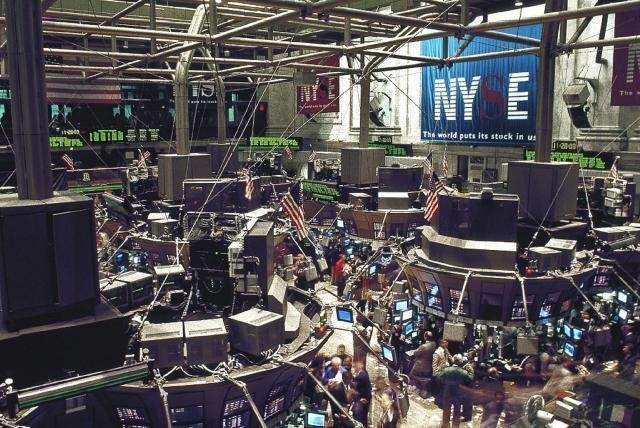The global supply chain crisis, which has been unfolding for several years, has left its mark on nearly every aspect of the economy. From empty shelves in grocery stores to delayed deliveries of everything from electronics to cars, the ripple effects of disruptions in supply chains have affected businesses, consumers, and entire industries. While the COVID-19 pandemic triggered many of these challenges, the root causes are multifaceted, involving geopolitical tensions, labor shortages, and outdated infrastructure. As economies attempt to recover, it’s clear that rebuilding and future-proofing global supply chains will require innovation, collaboration, and systemic change.
In this post, we’ll examine the key challenges contributing to the ongoing supply chain crisis and explore potential solutions that could mitigate future disruptions.
1. Key Challenges in the Global Supply Chain Crisis
COVID-19 Pandemic Aftershocks
The COVID-19 pandemic exposed vulnerabilities in global supply chains and triggered a cascade of disruptions that are still being felt today. Factory shutdowns, labor shortages, and transportation bottlenecks all led to delays, shortages, and skyrocketing costs.
- Factory Closures and Labor Shortages: As factories in key manufacturing hubs like China, India, and Southeast Asia shut down or operated at reduced capacity during lockdowns, production slowed dramatically. At the same time, a shortage of workers in essential industries—such as transportation and logistics—further exacerbated the problem.
- Shipping Bottlenecks: Shipping ports, especially in the U.S., Europe, and Asia, faced significant congestion. A backlog of containers waiting to be unloaded led to delays in deliveries and higher costs. In many cases, ships were stuck at sea for weeks, waiting for a berth.
Geopolitical Tensions and Trade Disruptions
Geopolitical issues have further stressed global supply chains. Trade wars, sanctions, and political instability in key regions have disrupted the flow of goods and created uncertainty in international trade.
- U.S.-China Trade War: Tariffs and trade restrictions between the U.S. and China led to higher production costs, delays, and shifts in trade routes. Even though tensions have slightly eased, the long-term effects are still being felt in industries such as electronics, steel, and agriculture.
- Brexit: The U.K.’s exit from the European Union created new barriers to trade, including customs delays, regulatory challenges, and labor shortages in sectors like transportation and agriculture.
- Russia-Ukraine Conflict: The ongoing war in Ukraine has had profound effects on energy prices, food exports, and raw materials. The conflict has disrupted the supply of wheat, oil, and natural gas, which in turn affects industries globally.
Transportation and Logistics Issues
Transportation is the backbone of the global supply chain, and its ongoing challenges are a key factor in the crisis. From road to sea and air, disruptions in transportation networks have led to delays, shortages, and cost increases.
- Port Congestion: Major ports in the U.S. (like Los Angeles and Long Beach), Europe, and Asia have faced severe congestion. The pandemic led to a surge in demand for goods, but many ports were not equipped to handle the influx. Even when ships could dock, the speed of unloading was slowed due to labor shortages and outdated infrastructure.
- Container Shortages: A mismatch between demand and available shipping containers has exacerbated delays. After the initial shock of the pandemic, countries and companies rushed to import goods, but the containers were not always where they were needed.
- Driver Shortages: The logistics sector has faced a significant shortage of truck drivers, particularly in the U.S. and Europe. Many workers retired or left the industry during the pandemic, while others were unable or unwilling to return due to safety concerns, lower wages, and difficult working conditions. This has led to delays in goods movement, particularly in inland distribution.
Raw Material Shortages and Inflation
Many industries are struggling with shortages of essential raw materials, such as semiconductors, timber, metals, and agricultural products. These shortages have led to inflation, production delays, and increased costs for manufacturers and consumers alike.
- Semiconductor Shortage: The global shortage of semiconductors—critical components for everything from smartphones to cars—has disrupted several industries, especially automotive and electronics. Factories are running at partial capacity due to the lack of available chips, and some manufacturers have had to halt production entirely.
- Raw Material Costs: The prices of metals, plastics, chemicals, and other raw materials have increased sharply, driven in part by supply chain disruptions and inflationary pressures. This has led to rising costs for manufacturers, which in turn increases prices for consumers.
Environmental Factors: Natural Disasters and Climate Change
Natural disasters, such as hurricanes, floods, and wildfires, have long posed a risk to global supply chains. However, climate change has increased the frequency and severity of these events, adding another layer of vulnerability to the system.
- Extreme Weather Events: In 2020 and 2021, hurricanes and floods disrupted production and transportation across multiple regions. These disruptions were particularly severe in areas like the Gulf Coast (U.S.), Southeast Asia, and Australia, where supply chains are heavily dependent on the movement of goods by sea and air.
- Climate Change Effects: Rising sea levels and more intense storms are creating long-term risks for global shipping routes, especially in low-lying coastal areas. As ports and infrastructure face increasing threats from climate change, the resilience of global supply chains will be further tested.
2. Solutions: Rebuilding and Reshaping Global Supply Chains
While the global supply chain crisis has highlighted the systemic vulnerabilities in the current model, it has also prompted a rethinking of how supply chains should be structured in the future. To mitigate the challenges and future-proof supply chains, several strategies and solutions are being proposed:
1. Diversification and Localization
One of the key lessons learned from the pandemic is the need for diversification and localization of supply chains. Over-reliance on a single country or region for key components, materials, or manufacturing can leave businesses vulnerable to disruptions.
- Shoring Up Regional Supply Chains: Many companies are moving away from the “just-in-time” model, which relied on minimal inventory and quick delivery, to more resilient models that include local suppliers or regional manufacturing hubs. This strategy, often referred to as “nearshoring” or “friendshoring,” seeks to reduce dependence on countries that are geopolitically unstable or prone to disruption.
- Digitalization and Automation: Supply chains that rely on outdated, manual systems are prone to inefficiency and delays. Investing in AI, IoT (Internet of Things), and blockchain technologies can enhance supply chain visibility, enable predictive analytics, and automate key processes. Smart warehouses, automated inventory tracking, and AI-driven demand forecasting can reduce costs and improve efficiency.
2. Improving Transportation Infrastructure
The transportation bottlenecks experienced during the crisis highlighted the need for significant investment in infrastructure. Improved ports, roads, railways, and airports can help speed up the movement of goods and reduce delays.
- Port Expansion and Automation: Upgrading and expanding ports to accommodate larger vessels and increase throughput is critical for reducing congestion. Automation, including the use of autonomous cranes and robots, can help speed up the unloading and loading process.
- Digital Freight Platforms: Digital platforms that connect shippers with carriers can help optimize routes and reduce inefficiencies. By leveraging real-time data, these platforms can better match supply with demand, streamline customs processes, and reduce costs.
3. Strengthening Supply Chain Resilience
The crisis has underscored the need for businesses to build more resilient and adaptive supply chains. This involves both short-term fixes and long-term strategies.
- Building Redundancy: Instead of relying on a single supplier or region, companies can establish multiple sources for critical components. This redundancy helps mitigate the risk of disruption in the event of a local or global crisis.
- Risk Management and Contingency Planning: Companies need to assess risks at every step of the supply chain and develop contingency plans for different scenarios, whether it’s a natural disaster, labor strike, or geopolitical conflict. Scenario-based planning and risk assessments should be part of regular operations.
4. Policy and Regulatory Support
Governments have a significant role to play in resolving the global supply chain crisis. By implementing policies that support trade, logistics, and infrastructure improvements, they can create a more stable environment for global commerce.
- Trade Policy Reform: Streamlining customs and trade regulations can reduce bottlenecks and improve the flow of goods across borders. Governments can also work together to standardize regulations, which will make it easier for companies to operate internationally.
- Climate Action and Infrastructure Resilience: Governments must take action to mitigate the impacts of climate change on supply chains by investing in infrastructure that is more resilient to extreme weather events. This includes building flood defenses, reinforcing transportation networks, and protecting key supply chain hubs.
Conclusion: Navigating the New Normal
The global supply chain crisis has exposed deep flaws in the way goods are produced and moved around the world. While the situation remains challenging, it has also spurred innovation and collaboration aimed at building more resilient, flexible, and sustainable supply chains.
The future of global trade lies in diversification, digitalization, and a renewed focus on resilience. Businesses that adapt to these changes will be better positioned to weather future disruptions. In the meantime, governments, corporations, and consumers must all work together to navigate the current crisis and ensure that supply chains are better equipped to handle the challenges of the future.
Ultimately, the global supply chain crisis offers an opportunity to rethink how goods are produced, moved, and consumed, with an eye toward building a more sustainable and equitable global economy.




